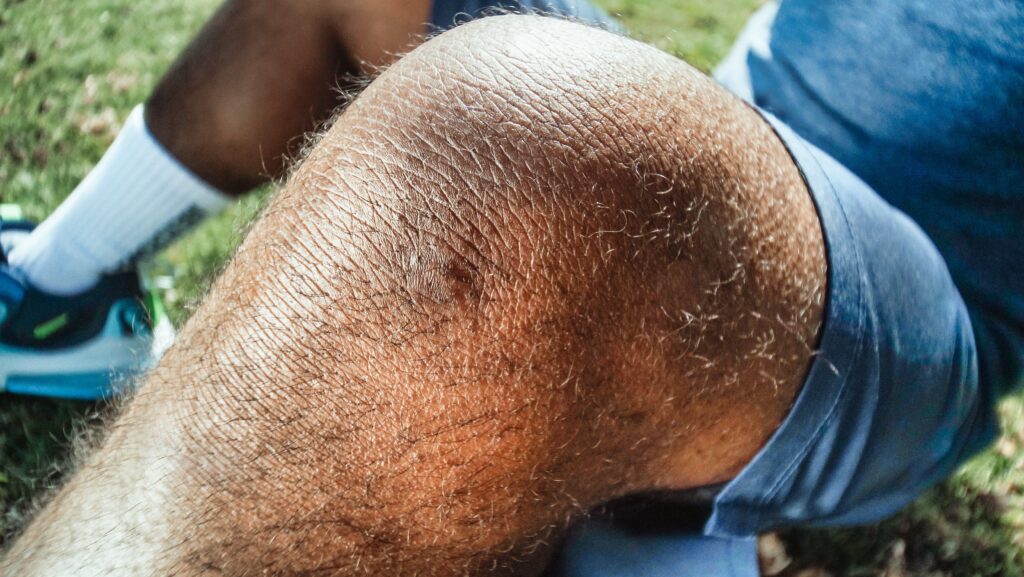Understanding Knee Pain: Causes, Anatomy, & When to Get Help
Introduction
If you’ve ever experienced knee pain, you know the discomfort it can cause. Whether it’s a dull ache or an unbearable throbbing sensation, there’s no denying that knee pain can be debilitating. But what is causing this pain? What are the common causes of knee pain and when should you seek medical attention? In this article, we’ll explore all of the potential causes of knee pain and the risk factors associated with it. By understanding more about the anatomy of the knee, as well as the common causes and types of arthritis that can contribute to knee pain, you’ll be better prepared to seek treatment if necessary. Let’s get started!
Understanding the Anatomy of the Knee
The knee is a complex joint, and understanding its anatomy is essential to diagnosing and treating knee pain. The knee is a hinge joint consisting of three bones: the femur (thigh bone), tibia (shinbone), fibula, and patella (kneecap). These bones are connected by four strong ligaments. The medial collateral ligament runs along the inner side of your knee, while the lateral collateral ligament runs along the outer side. The anterior cruciate ligament (ACL) and posterior cruciate ligament (PCL) provide stability and support in the middle of your knee joint. There are also two large tendons: the quadriceps tendon and patellar tendon, which attach muscle to bone around the knee joint.
Defining Knee Pain
Knee pain is any discomfort or soreness in and around the knee joint, which can range from a dull ache to an intense throbbing sensation. It can be caused by an injury, mechanical problems, overuse injuries, or various types of arthritis.
Common Causes of Knee Pain
There are a number of potential causes for knee pain, including injuries, mechanical problems, and types of arthritis.
Injuries: Knee injuries are common and can occur through direct contact or sudden movements such as twisting, jumping, or running. Common causes include ACL injury (tearing the anterior cruciate ligament), fractures (breaking a bone in the knee), torn meniscus, and knee bursitis (inflammation of the sac of fluid that cushions the knee joint).
Mechanical Problems: Mechanical problems can also cause knee pain. A loose body in the joint is one example, which occurs when a small piece of cartilage or bone breaks off and floats around in the joint. Hip or foot pain caused by improper alignment can also lead to knee pain. A dislocated kneecap is another mechanical problem that can cause knee pain.
Types of Arthritis: There are three main types of arthritis that can affect the knee joint: Osteoarthritis, Rheumatoid Arthritis, and Gout. Osteoarthritis is a degenerative condition where the cartilage in the joint wears away, leading to pain and stiffness. Rheumatoid Arthritis is an autoimmune disorder where the body’s own immune system attacks the joints, resulting in inflammation and pain. Gout is caused by an accumulation of uric acid in the joint that leads to sudden severe episodes of pain, swelling, redness, and warmth around the affected area.
Risk Factors for Knee Pain
There are a number of risk factors that can increase the likelihood of knee pain, including age (over 50 years old), obesity, weak muscles in the legs and hips, previous knee injury or surgery, and overuse injuries.
When to Seek Medical Attention
If you experience any sudden or severe knee pain that lasts for more than a few days, it is best to seek medical attention. Additionally, if there is visible swelling, extreme difficulty in walking or standing, changes in skin color or temperature around the affected area, numbness, tingling, or instability of the knee joint then you should contact your doctor right away.
Conclusion
Knee pain can affect people of all ages and activity levels, but understanding the anatomy of the knee, being aware of common causes of knee pain, as well as knowing the risk factors for developing knee pain can help you take preventative steps to avoid injury. If any sudden or severe knee pain occurs then it is best to seek medical attention right away. Taking these precautions will help you maintain healthy, strong knees.

